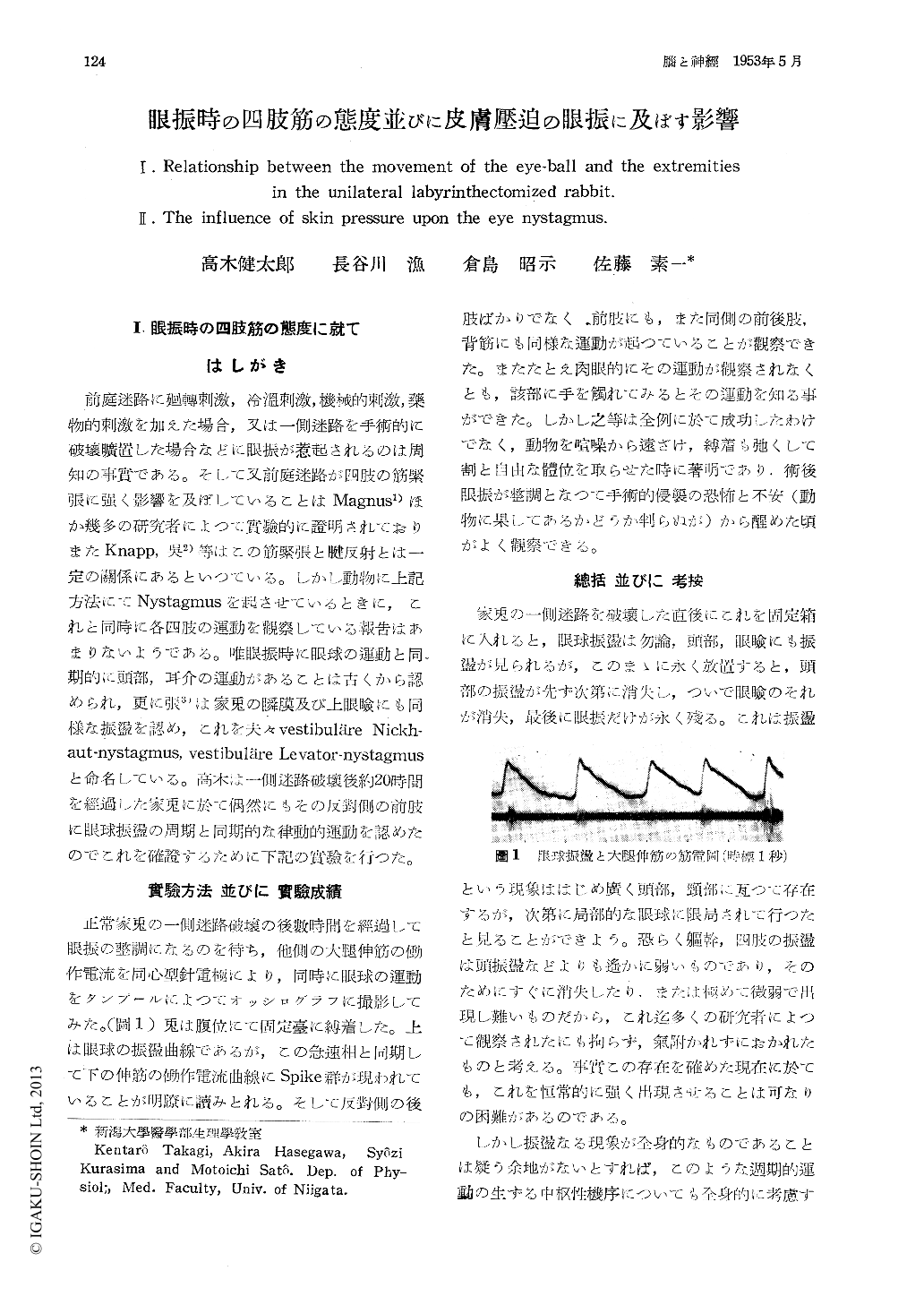- 有料閲覧
- 文献概要
- 1ページ目
I.眼振時の四肢筋の態度に就て
はしがき
前庭迷路に廻轉刺激,冷温刺激,機械的刺激,藥物的刺激を加えた場合,又は一側迷路を手術的に破壞曠置した場合などに眼振が惹起されるのは周知の事實である。そして又前庭迷路が四肢の筋緊張に強く影響を及ぼしていることはMagnus1)ほか幾多の研究者によつて實驗的に證明されておりまたKnapp,呉2)等はこの筋緊張と腱反射とは一定の關係にあるといつている。しかし動物に上記方法にてNystagmusを起させているときに,これと同時に各四肢の運動を觀察している報告はあまりないようである。唯眼振時に眼球の運動と同期的に頭部,耳介の運動があることは古くから認められ,更に張3)は家兎の瞬膜及び上眼瞼にも同様な振盪を認め,これを夫々vestibuläre Nickh-aut-nystagmus, vestibuläre Levator-nystagmusと命名している。高木は一側迷路破壞後約20時間を經過した家兎に於て偶然にもその反對側の前肢に眼球振盪の周期と同期的な律動的運動を認めたのでこれを確證するために下記の實驗を行つた。
1) In a unilateral labyrinthectomized rabbit rhythmical movement of forelimb contralateral to operation, synchronous with the rhythm of eye-nystagmus, was accidentally found. In fur-ther observations, electromyographical or by naked eyes, the above mentioned rhythmical movements are noticed not only in forelimb, but in all four limbs and back muscles.
Consequently it can be said that the removal of one labyrinth produces not only nystagmus of eye, palpebra and ear-lobe etc., but of all muscles in the body.
2) Mechanical stimulations on the skin inf-luence the nystagmus of eye-ball in rabbit.
Stimulus such as touch to the skin, or blow on the hair acts facilitatory to the nystagmus, namely increase in frequency or in amplitude of movements can be seen by stimulus. On the contrary pressure on the skin acts inhibi-tory and reversal results are seen during the stimulation.
As Adrian had pointed out, dermal receptors for touch and pressure are distinguishable in respect to their rate of adaptation, and there-fore it can be said that the excitation of rapid adapting nerve fibers facilitates, and that of slowly adapting one inhibits the nystagmus.

Copyright © 1953, Igaku-Shoin Ltd. All rights reserved.


